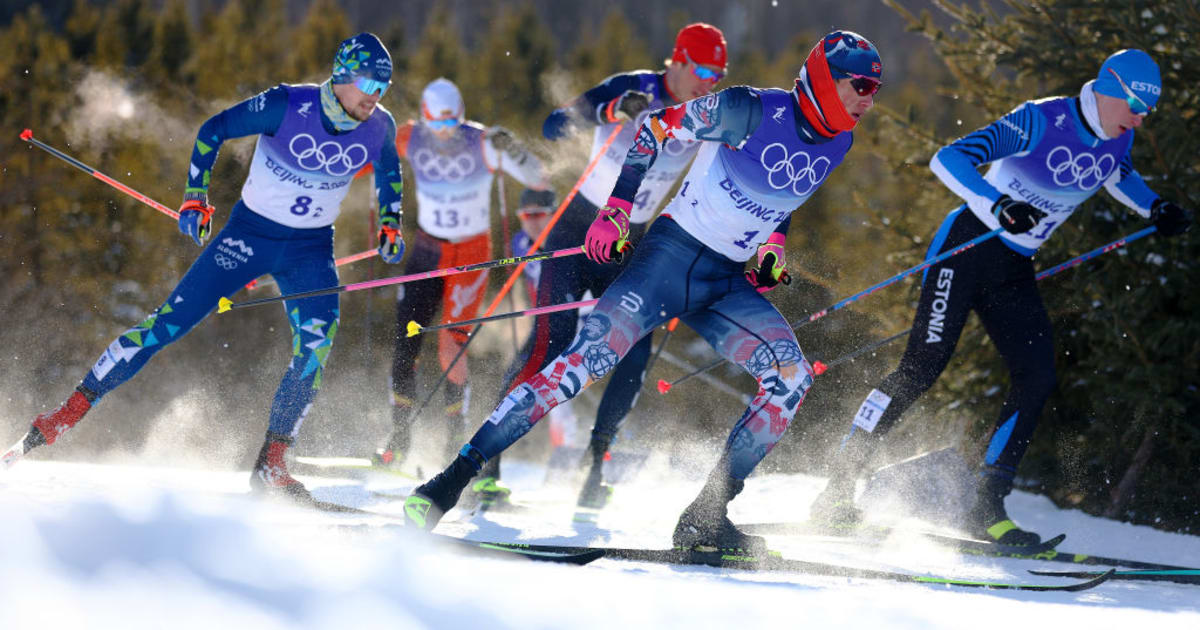Fitness
Your Body Never Forgets Muscle. So Here’s How Long It Really Takes To Regain Strength.

You’ve probably heard the phrase “muscle memory” thrown around at some point, but it might not mean what you think it does. In fact, many everyday exercisers misunderstand the concept of muscle memory. The truth: Your muscles don’t actually remember anything, says Alexander Rothstein, EdD, CSCS, an exercise physiologist, strength coach, and educator.
Muscle memory is what helps you bounce back after time off, master new skills, and rediscover old hobbies. Whether you’re chasing a personal record in weightlifting, aiming to nail your tennis serve, or just hoping to make everyday activities feel less like a chore, muscle memory can be a secret weapon to moving better and with less effort.
Ahead, we’ll explain exactly what it is, break down the science, get real about what it can (and can’t) help with, and offer tips on how the average exercisr can leverage it to crush fitness goals.
Meet the experts: Alexander Rothstein, CSCS, ACSM-EP, is an exercise physiologist and instructor for the exercise science program at New York Institute of Technology. Arthur L. Jenkins III, MD, is a board-certified neurosurgeon specializing in complex spinal neurosurgery and founder of Jenkins NeuroSpine. Luke Carlson, CPT, ACSM-EP, is a fitness trainer, exercise physiologist, and CEO of Discover Strength. Kristin Lettenberger, PT, DPT, CSCS, is a physical therapist at Bespoke Treatments in New York City. Rachelle A. Reed, PhD, MS, ACSM-EP, is an exercise physiologist.
What Muscle Memory Actually Means
Contrary to popular belief, muscle memory isn’t about your muscles remembering anything—it’s how your brain and body work together to create efficient movement patterns through repetitive practice, says Arthur L. Jenkins III, MD, a board-certified neurosurgeon. “Muscle memory is a bit of a misnomer—it’s actually a neurological process that primarily involves the brain and spinal cord,” he says. It’s more accurately described as “command center memory,” orchestrated by the central nervous system, adds Rothstein.
But that’s only half the story. Beyond neural pathways, muscle memory also involves changes within the muscles themselves. During strength training, your muscles grow larger and stronger, adding myonuclei (control centers within individual muscle fibers that help regulate growth and repair), says Luke Carlson, CPT, ACSM-EP, a fitness trainer, exercise physiologist, and CEO of Discover Strength. These myonuclei don’t vanish when you stop working out; instead, they stick around, helping you regain strength and muscle mass faster when you return to training, according to a study published this year in The Journal of Physiology.
So, you can think of muscle memory as your body’s GPS system: part neurological, part structural, says Rothstein. The first time you try a move, you’re “following directions,” he says. But with repeated practice, these systems work together to make the route feel easier and more automatic. Over time, it becomes second nature—whether it’s driving to the grocery store or performing a flawless deadlift—saving you energy and helping you bounce back faster after a break.
How long does it take to build muscle memory?
The time it takes to develop muscle memory depends on the complexity of the skill and how often you practice it.
When you repeat a movement—like lifting weights or nailing a yoga pose—the body’s motor control center (which includes the premotor cortex, cerebellum, and spinal cord) is hard at work, establishing and strengthening neural pathways to make the action more efficient over time. Repetition rewires your brain to make movements smoother, more efficient, and less taxing, says Dr. Jenkins, which is supported by a 2019 study in Frontiers in Systems Neuroscience that examined what factors make neurorehabilitation after a stroke more effective.
Simple, single-joint movements, like a biceps curl, can feel natural after just a few sessions. “Your brain only needs to coordinate one muscle group, so the pathways form faster,” says Rothstein. Complex, multi-joint movements, like a barbell snatch, might take months—or even years—to master.
The more joints and muscles involved, the longer it takes for your brain to establish efficient neural pathways, says Rothstein. However, consistency is key—especially for beginners.
Practicing movements intentionally, such as actively engaging the glutes during a squat to strengthen the mind-muscle connection, can speed up muscle memory development, says Kristen A. Lettenberger, PT, DPT, CSCS, a physical therapist and strength coach. Research supports this: Focusing on specific muscles during exercises, like the bench press, can significantly increase their activation, particularly when using moderate weights, a 2016 study published in the European Journal of Applied Physiology found.
Tapping into the mind-muscle connection not only enhances muscle engagement but also reinforces the neural pathways needed for smoother, more efficient movement patterns over time. “Aim for full-body workouts that hit all movement patterns three times a week,” she says. “Once new skills are established, you may only need to practice the movements once or twice a week to maintain muscle memory.”
Mastering high-level skills like an olympic weightlifting move or a golf swing may require up to 10,000 hours of practice, but most people can achieve some level of proficiency in far less time, adds Dr. Jenkins. But repeating a movement or skill correctly is crucial for muscle memory to form in a way that will be useful. “You know that saying, ‘practice makes perfect?’ In the case of muscle memory, ‘perfect practice makes perfect’ is more accurate,” he says. “If you practice a movement incorrectly, you’ll reinforce inefficient patterns.”
What Muscle Memory Can—And Can’t—Do For You
Muscle memory helps you get back into shape faster after a break, makes complex movements feel more intuitive, and allows you to transition between similar activities easier (think: from tennis to pickleball). But it’s not magic—it has its limitations.
What Muscle Memory Can Do For You
- Helps you bounce back faster. “Even if you take a long break from training, your neural pathways remain intact,” says Dr. Jenkins. If you used to lift heavy weights years ago, you’ll likely regain your form and technique faster than a beginner, according to a study published this year in the Scandinavian Journal of Medicine and Science in Sport. The exact amount of time it takes will vary depending on the amount of time away from the goal, your level of experience prior to taking a break, and more.
- Improves efficiency. With practice, you’ll expend less energy on movements, making workouts feel smoother. This helps you progress to more complex movements and lifting heavier loads.
- Supports lifelong fitness. The strength training you do today could benefit you years from now, says Carlson. Even if muscle size diminishes after a hiatus, the muscle cells you build through training remain, creating a foundation for faster progress when you return. “Your body might not be ready for the same intensity when you return to an activity like weightlifting, but you’ll rebuild muscle faster because you don’t need to relearn the skill,” adds Rothstein.
What Muscle Memory Can’t Do
- Replace lost strength entirely. “Your neural pathways might be intact, but muscle tissue itself is expensive for the body to maintain,” says Rothstein. In other words, your body burns a lot of calories to keep muscle around, so if you’re not actively using it, your body will let it go to conserve energy for more essential functions. “You’ll need to rebuild muscle through consistent training.”
- Bring back endurance and peak performance. If you used to run sprints or long distances, jumping back into the same regimen without a reconditioning plan can lead to injury. Even if your neural pathways remember how to perform an activity, your cardiovascular system and supporting structures (connective tissues, muscles, bones) may not be ready to handle the same intensity you did in the past, says Rothestein. Physical activities often require prolonged, repetitive movements that place significant demand on the heart, lungs, and smaller stabilizing muscles, which degrade over time without consistent training.
How You Can Leverage Muscle Memory For Muscle Gains
Want to maximize muscle memory in your workouts? Here are expert-backed strategies to put it to work:
- Practice with purpose. “Perfect practice makes perfect,” Dr. Jenkins reminds. Incorrect form creates inefficient pathways—prioritize quality over quantity and focus on proper form and controlled movements to reinforce efficient neural pathways.
- Engage your brain. Visualization, real-time feedback (like looking at yourself in the mirror during reps), and mental rehearsal can enhance the mind-muscle connection, says Rachelle A. Reed, PhD, MS, ACSM-EP, an exercise physiologist. This is particularly useful when recovering from an injury or mastering a new skill.
- Stay consistent. Regular practice is key. Even a short session that hits the same muscle groups can help maintain your skills if you consistently do it a few times per week.
- Break down complex skills. Rothstein suggests simplifying intricate movements into smaller parts, which is also supported by the same 2019 study in Frontiers in Systems Neuroscience referenced earlier. For example, when learning a row, focus first on driving your elbows behind you rather than every component of the movement (like engaging the biceps muscle, activating the rhomboid, etc.)
- Prioritize recovery. Sleep and rest are vital for consolidating motor learning, according to a 2020 study in Neuroscience and Behavioral Reviews and a 2021 study in the Journal of Neuroscience. “The actual conversion of muscle memory happens after you’ve slept,” Rothstein says.
Talene Appleton is the fitness editor at Women’s Health, where she covers all things fitness, nutrition, and healthy living. She studied nutrition and exercise science at George Washington University and is a NASM-certified personal trainer and nutritional consultant. Passionate about the intersections between fitness, food, and community, she strives to foster inclusive and holistic wellness narratives for underrepresented populations. When not writing, she can be found hosting dinner parties and exploring new wellness and culinary experiences around New York and Los Angeles. Prior to her role at Women’s Health, she was the fitness and commerce editor at Men’s Health and contributed to General Surgery News, The Food Institute, and The Nessie.










